Product Marketing: The Complete Guide
Published:

Sales brings in revenue. Finance keeps the books in order. Engineers build the product. And customer success helps keep customers happy.
Even though we might not know all the details, we instantly understand the outcomes that these teams are responsible for — and that’s the case with almost every function within a company.
Almost. Except when it comes to product marketing.
Ask anyone to define what a product marketer does, and you’ll often end up with wildly different answers. And Google isn’t much help either.
Hi, I’m Aurelia. I’m a seasoned product marketer for B2B technology companies and currently lead an amazing team of product marketers.
That means I’m all too familiar with the ins and outs of product marketing, and how it varies company-by-company, which is why I’m sharing this guide to help define what product marketing is, why it’s so important, and a whole lot more.
Here’s a sneak peek of everything we have in store:
- What is Product Marketing?
- What is Product Marketing Actually Responsible For?
- Why is Product Marketing Important?
- What is a Product Marketing Strategy?
- Great Product Marketing Campaigns & Examples
- Final Thoughts
Ready to learn?
What is product marketing?
Product marketing is the process of aligning product positioning with customer needs so that customers will actually buy and use those products. It essentially comes down to bringing the product to market and making it sellable. We do that by understanding our buyers’ challenges and positioning our product as a solution to their problem.
A product marketer might spend their day writing positioning and messaging, launching new products and features, talking to customers, or enabling other teams to sell successfully. That’s why we sit at the intersection of product strategy, sales, customer success, and marketing.
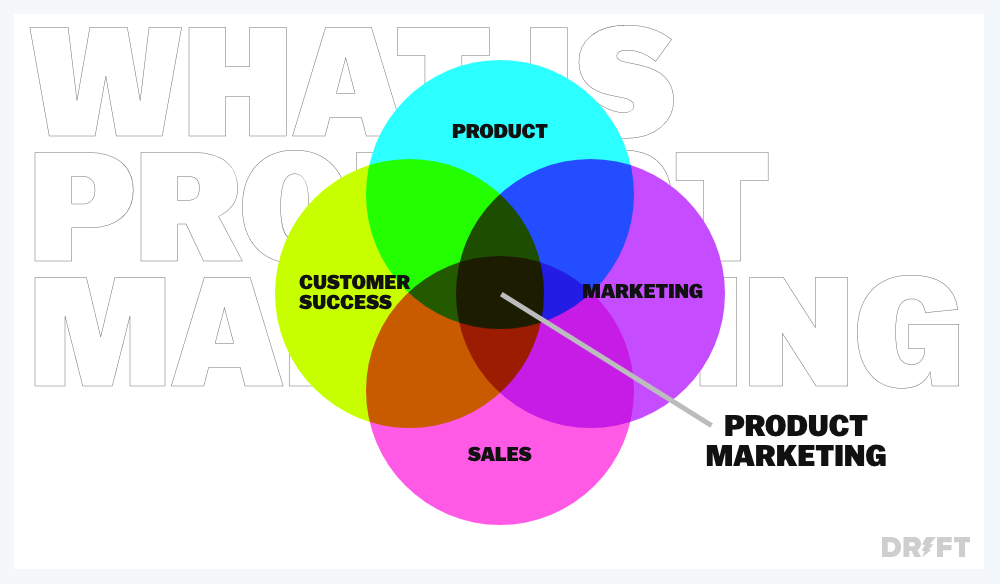
While this shows the huge impact that product marketing can have, it does make it harder to give a one-size-fits-all description of what we do.
In some companies, a product marketer works solely on product positioning. In others, they focus on sales enablement or driving demand and product adoption. And in some companies, they do all of those things.
So, your next question is probably…
What is product marketing actually responsible for?
A product marketer’s main responsibility is to be the voice of the customer.
Product marketers know that no one buys products or features — people buy solutions to their problems. That’s why we’re focused on creating narratives that draw on customer insights so that buyers will see our products as a way to solve their challenges and reach their goals.
And this is a job that starts from the earliest stages of product development and continues long after launch.
The key responsibilities of a product marketer include:
- Positioning and messaging
- Owning the overall go-to-market (GTM) strategy (like naming, packaging and pricing, partner activation, positioning, enablement, top-of-the-funnel and middle-of-the-funnel content, campaigns, and offers)
- Helping the sales team sell more and close more deals
- Having a deep understanding of the market, our customers, why we win and lose, and the competitive landscape
- Informing product roadmap and commercializing new products (product launch)
- Driving awareness, demand, adoption, win rates, and deal size
All of this work also goes into creating a successful product marketing strategy. Check out our product marketing strategy to see how we think about positioning and promoting products.
Product marketing vs. traditional marketing
Traditional marketing is all about promoting a company and its brand as a whole – and creating demand for it. Product marketing, on the other hand, focuses specifically on the products your brand sells and driving demand and adoption for the product.
In traditional marketing, your goal is to get people interested in your company. Think your demand generation team — your email marketers and campaign managers. These people work to establish awareness of your brand and build trust with potential buyers.
On the other hand, product marketers hone in on specific audiences for products and solutions, and work on getting those people to buy. That might be new customers (“new business”) but more often, our target audience comes from our existing customer base. We understand the specific buyer personas in our audience, like a Chief Revenue Officer, and what their pains and goals are, what they care about, how they measure success, and where they do their research.
All this information helps us craft positioning that appeals to them. Our goal is to promote products in a way that resonates with customers to increase customer lifetime value, drive product adoption, and increase win rate and revenue.
Product marketing vs. product management
A product manager’s job is to define and build new products and features. It’s the product marketer’s job to commercialize those products — drive demand, revenue, and adoption for those things.
To put it another way, the product manager is responsible for understanding the problem that their customers are facing, and then scopes and builds a solution. The product marketer owns the commercialization strategy and the narrative, and defines the product’s position in the market.

Because product marketers and product managers both know the product inside and out, we work together daily, especially when it comes to scoping the product and building out the roadmap.
But, ultimately, our responsibilities and the outcomes we work towards are vastly different from one other. (Learn more about product marketing vs. product management.)
Why is product marketing important?
As you saw in the list of associated responsibilities and deliverables, product marketing is in charge of creating the foundation that teams use to successfully position and promote products. Everyone from product to sales to customer success teams will work with product marketers to ensure a successful launch.
And when it comes to marketing, product marketing plays a vital role in supporting the team’s initiatives. That’s why we’ll be focusing on product marketing as it relates to a marketing team’s goals from here on out.
Product marketing is important not only because it ensures the marketability of your products, but because it also contributes to the brand narrative. And, as anyone in marketing will tell you, your brand is what will make you stand out.
In the new era of B2B marketing and sales, buyers have more options than ever before. As a result, today’s buyers find it difficult to distinguish between vendors who sell products that look alike.
No one is more dialed into what customers think than the modern product marketer. And that’s why you should rely on them to help you cut through the noise in an increasingly crowded market landscape.
We use integrated marketing campaigns to bring together our entire marketing team to create a cohesive, multichannel experience for the buyer — and product marketers are at the very heart of this process.
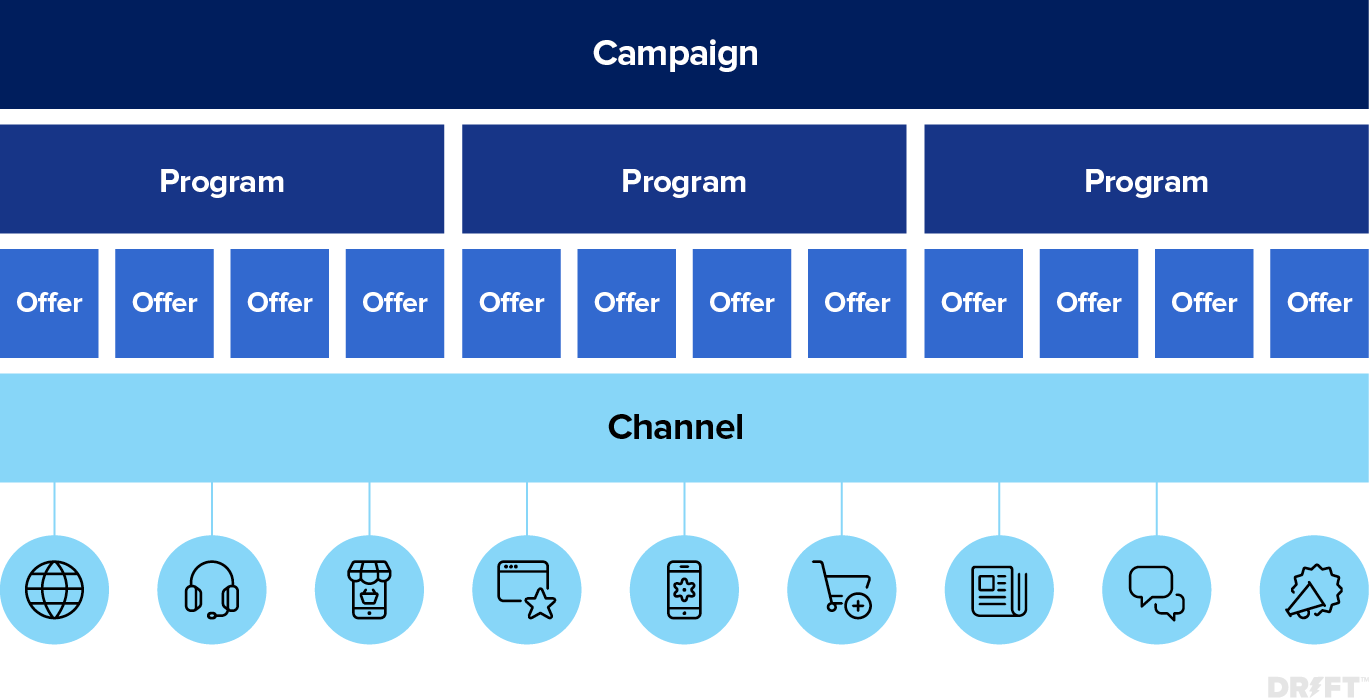
Once marketing leaders have decided what campaigns they plan to run and the demand generation team has identified which audience segments we will target, product marketers come up with a program narrative. These narratives focus on a specific target audience and core theme, and then informs what offers are created.
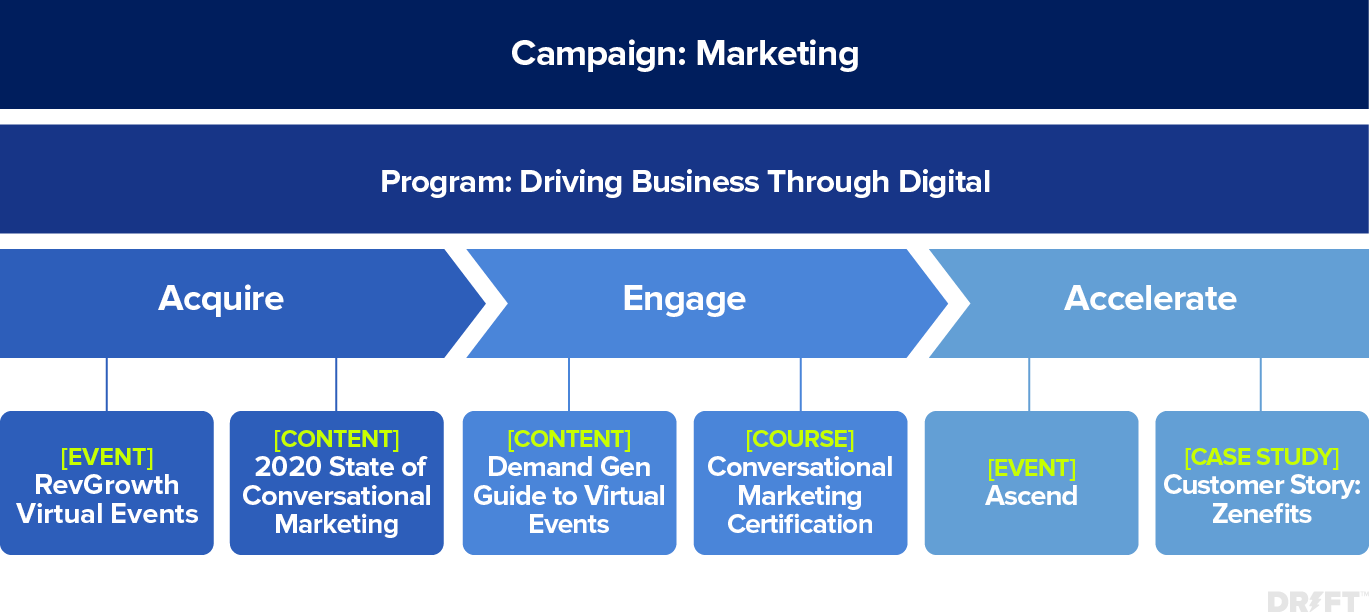
In short, product marketers craft the high-level narratives that act as a foundation for each program. It is these narratives that make your brand unique and allows you to engage with buyers at every stage of the buying journey, so that you’ll be the first to come to mind when it’s time to buy.
That is why, today, product marketing is a staple of any marketing team.
What is a product marketing strategy?
A product marketing strategy is a roadmap that will guide your product from development to launch. This strategy will help you decide how you position and promote your product, both before and after launch.
Here’s a breakdown of the eight steps you need to follow in any product marketing strategy.
1. Customer development
Before you can say anything about your product, you have to know who your audience is.
The first thing that a product marketer must do is define the target market and create buyer personas. This will help you understand who the buyer is, as well as what their needs and interests are. With this information, you will be able to create messaging that resonates with your target audience.
2. Positioning and messaging
After you’ve figured out who you’re talking to, it’s time to decide what you’re going to say. Using the information you learned about your target audience, create a narrative that positions your product as a solution to their problems.
Don’t forget that you also want to emphasize what makes your product unique because that is how you will distinguish yourself from your competitors.
All of this comes down to answering these five questions:
- Who is this product for?
- What does this product do?
- Why should customers want to use it?
- Why do customers need it now?
- How is this product different from what’s out there already?
You’ll know your positioning and messaging is working if your buyers can instantly find out the answers to these questions.
3. Sharing positioning and messaging
Your positioning and messaging will only be effective if everyone at your company is on the same page. Just imagine how confused your buyers would be if you were sending multiple different messages at once.
It’s important then that product marketers get buy-in from across the organization, coach everyone on key messaging, and lead sales and customer success enablement efforts. That’s how you ensure your messaging is consistent and accurate.
Sharing your positioning and messaging is also crucial for your overall brand positioning. Doing so will set you up to work with the rest of the marketing team to deliver a strong GTM message.
This type of activity is key to your larger brand positioning, where product marketers can work together with other marketing members to deliver a strong GTM message.
4. Making a launch plan
The best way to prepare your team for a successful launch? Create a launch plan.
A product launch typically involves teams from across the organization, from marketing to sales to support. Product marketers need to own the launch plan to keep track of these moving parts.
When creating your launch plan, work backwards. Set a clear goal and launch date, then figure out what you need to do to successfully launch on time and reach that goal. At the end of the day, most product marketers measure their success based on demand and win rate, so they need an effective launch plan for a successful launch.
5. Creating launch content
Your launch content is the glue for your launch plan. This includes all the assets you need for your launch — demos, positioning docs, pitch decks, one pagers, product screenshots, sales training materials, blog posts, landing pages, and more.
While you work with other teams to develop this content, make sure to think about tracking. Only by tracking your content will you be able to measure the success of your launch.
6. Preparing the team
In your haste to tell your buyers about this cool new product or feature, don’t forget to keep your team in the loop.
For a product launch, internal communication is just as important as external communication. Ensure your entire team — including sales, customer success, marketing, and product — prepares and gets ready to go, whether they check that the website is good to go live or prepare your support team to field calls and chats.
7. Product launch
It’s go time
This is the defining moment for a product marketer — when the rubber meets the road and the customers start rolling in. Just remember that not everything will work out smoothly, so be ready to adjust on the fly.
8. Post-launch
You’ve made it! Now, it’s time to reflect.
Set up a retrospective meeting to look back and see what you could’ve done better. Don’t forget to use that time to celebrate your wins as well — the small ones along the way and the big one on launch day.
Make sure you also measure the success of your launch plan by monitoring customer and internal feedback for at least a quarter post-launch and aligning with your product team on what the adoption metrics are. Then use those metrics along with up-sell and cross-sell metrics to further evaluate the performance of your launch.
Great product marketing campaigns & examples
We’ve spent a lot of time talking about what product marketing is and what product marketers do, but what does a great product marketing campaign actually look like?
That’s why we’ve gathered three examples of brands that excel at product marketing. We chose these brands because their product marketing…
- Puts the customer at the center of everything they do: Product marketers need to have a deep understanding of the customer and the market to create messaging that speaks to customers.
- Nails positioning & messaging. Even if you have a killer product and unparalleled internal support, none of that matters if you aren’t doing a good job explaining what your product does and how it helps your customers.
- Is timely. Product launches should be well-executed and well-timed to the needs of your customers and the market.
- Focuses on bold and creative solutions. Today’s product marketers are creative, out-of-the-box thinkers. That’s why we’re showcasing brands that are leveling up product marketing and spearheading new ideas.
Let’s dive in
Spotify celebrating the listening habits that are only you
We all get excited when our Spotify Wrapped pops up in December. But for those people too impatient to wait until then, Spotify launched the Only You campaign in June 2021.
This was a campaign dedicated to celebrating the unique way you listened to music, drawing on statistics to showcase your audio birth chart, your unique audio pairings, what you listened to at different times of day, and more.

Source: Spotify
Not only did Spotify prove exactly how well they personalized your listening to you, they also created a space for you to feel connected with other listeners who shared your tastes. So, while Only You showed that your listening was unique, it also showed that you weren’t alone. (And, wow, didn’t that hit hard in the middle of a pandemic?)

To top it all off, Spotify launched their Blend feature, which creates a curated playlist between two users so they can easily share the music they love with one another. All in all, the Only You campaign delivered a product experience that put a spotlight on the listener and emphasized connection, at a time when we all felt disconnected.
Zoom's pandemic-driven boom continues
Today, it’s almost impossible to talk about the pandemic — and modern product marketing — without mentioning Zoom.
It’s no exaggeration that, when COVID drove much of normal life online, Zoom’s sales rose meteorically — in March 2020, first-time installations of Zoom’s mobile app rose 728%. The video conferencing software quickly became crucial to connecting not only businesses and clients, but families, friends, teachers, students, doctors, patients, and so many others.
Zoom’s sudden growth in 2020 wasn’t without its obstacles. From security concerns to bandwidth issues, Zoom had to pivot quickly to help customers cope with our new virtual reality.
This meant addressing customer feedback, scrutiny, and needs almost overnight. The pandemic also forced Zoom to rethink who their customers truly were and how to best support them.

It’s not surprising then that Zoom has continued to expand upon their solution to adapt to the realities of living and working during the pandemic. In 2021, they launched Zoom Apps, which allows for more productive workflows through third-party integrations. And they also released Zoom Events, an all-in-one hub for virtual event management.
Zoom’s story offers a masterclass for acting in the face of uncertainty and the success that you can gain from being agile.
Apple's still got it
You’d be hard-pressed to find a list of great product marketing campaigns that doesn’t include Apple. (Seriously, we tried.)
But it’s impossible to talk about modern product marketing without mentioning Apple because it combines the best of all worlds: a seamless web experience, copy that nails it every time, and a one-stop shop for product information.
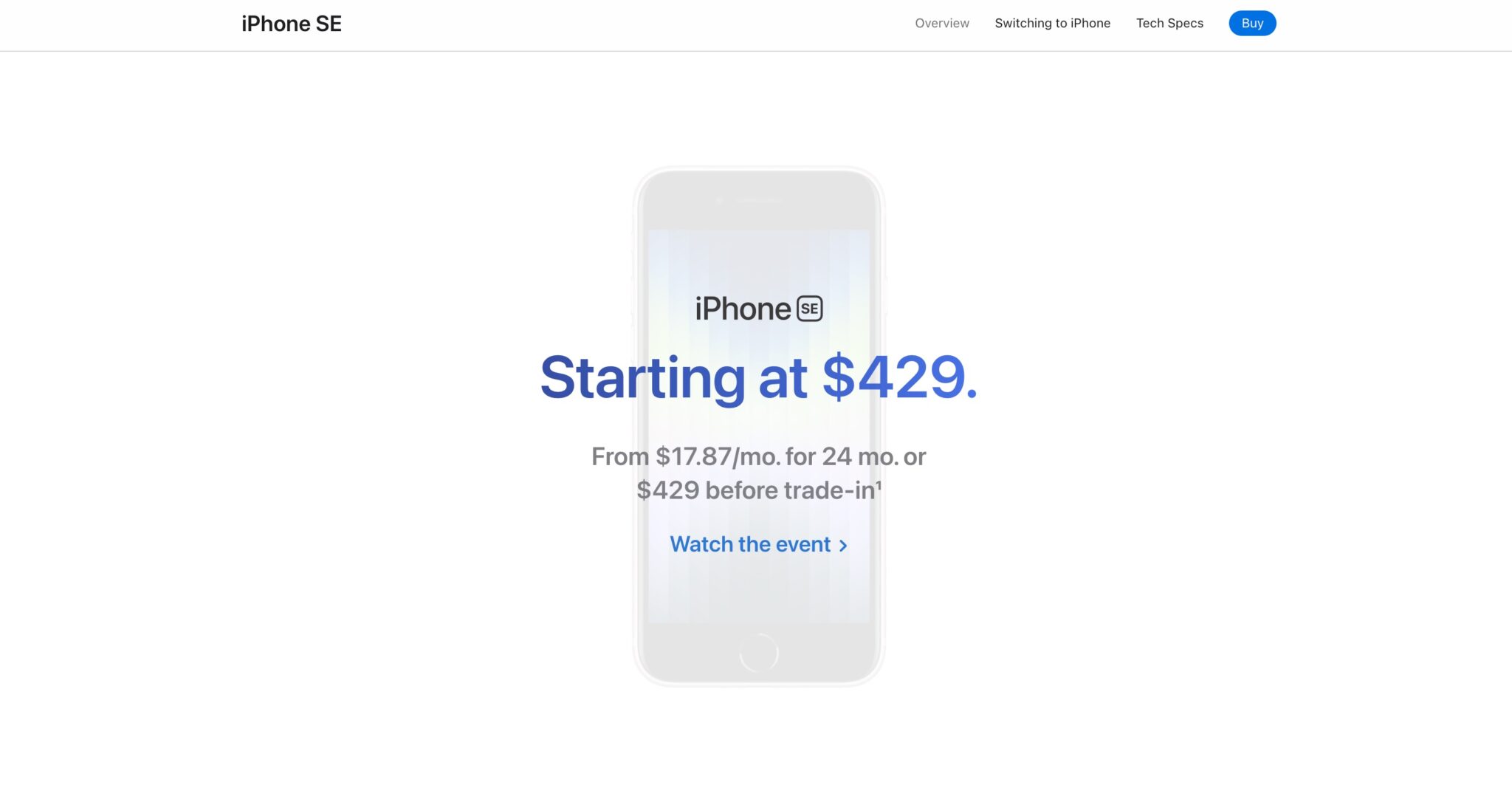
Apple often excels in the world of B2C technology because it has done an incredible job of understanding who their customers are, what drives them, what pains them, and what they want now. They then translate that knowledge into innovative products and marketing that highlights the benefits instead of the features.
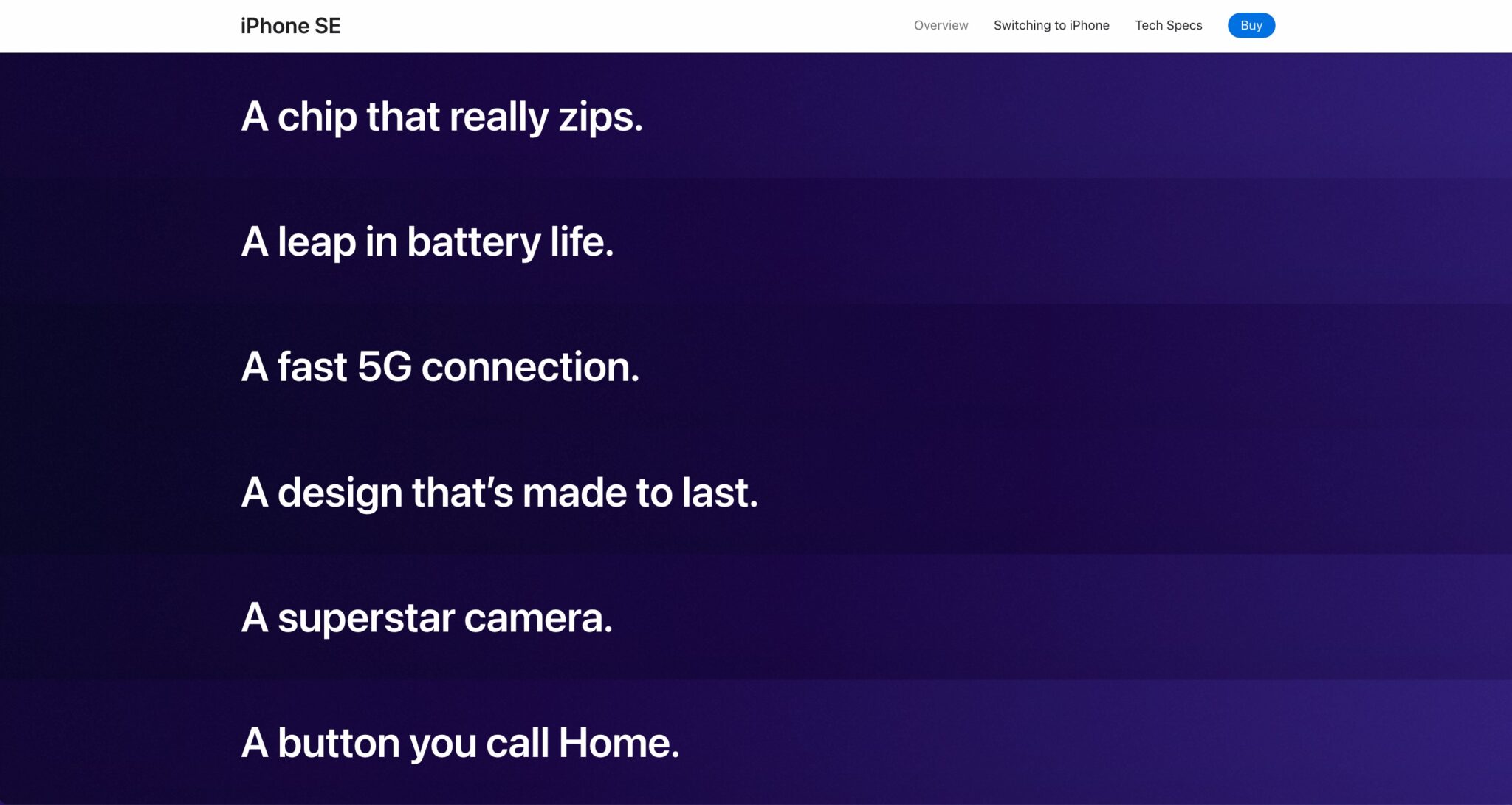
For those reasons alone, we expect they’ll continue to grace lists like this one for years to come.
Final thoughts
Product marketing has changed over the years, and it will probably continue to change over time.
But what won’t change is how important product marketing truly is. In the fiercely competitive technology industry, product marketing is essential to making you and your products stand out. And that’s only going to become more true as more competitors flood the market.
That’s why our advice is to hire your first product marketer before you think you need one. Since their main responsibility is to be the voice of your customer, they’re proactive in figuring out your customer’s challenges and goals and relaying those details to the rest of the team.
That means that by the time you realize you need them, it’s already too late. Investing early in product marketing allows you to not only stay on top of customers’ needs, but also create better, more meaningful solutions.
Hopefully, this guide has given you a better sense of what product marketing is and inspired you to invest in it in the future.
Editor’s Note: This article was originally published on 12/03/2018 and has been updated 9/17/2024 to reflect new information and new examples.





























